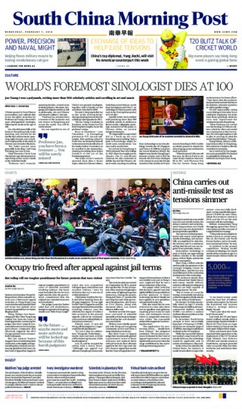Related Research Articles
A mining accident is an accident that occurs during the process of mining minerals or metals. Thousands of miners die from mining accidents each year, especially from underground coal mining, although accidents also occur in hard rock mining. Coal mining is considered much more hazardous than hard rock mining due to flat-lying rock strata, generally incompetent rock, the presence of methane gas, and coal dust. Most of the deaths these days occur in developing countries, and rural parts of developed countries where safety measures are not practiced as fully. A mining disaster is an incident where there are five or more fatalities.
There have been many extremely large explosions, accidental and intentional, caused by modern high explosives, boiling liquid expanding vapour explosions (BLEVEs), older explosives such as gunpowder, volatile petroleum-based fuels such as gasoline, and other chemical reactions. This list contains the largest known examples, sorted by date. An unambiguous ranking in order of severity is not possible; a 1994 study by historian Jay White of 130 large explosions suggested that they need to be ranked by an overall effect of power, quantity, radius, loss of life and property destruction, but concluded that such rankings are difficult to assess.

The South China Morning Post (SCMP), with its Sunday edition, the Sunday Morning Post, is a Hong Kong-based English-language newspaper owned by Alibaba Group. Founded in 1903 by Tse Tsan-tai and Alfred Cunningham, it has remained Hong Kong's newspaper of record since British colonial rule. Editor-in-chief Tammy Tam succeeded Wang Xiangwei in 2016. The SCMP prints paper editions in Hong Kong and operates an online news website that is blocked in mainland China.

China is the largest producer and consumer of coal and the largest user of coal-generated electricity in the world. The share of coal in the Chinese energy mix declined to 55% in 2021 according to the US Energy Information Agency.
Events in the year 2007 in China.

The 2008 South China floods began on 26 May 2008. Four rounds of torrential rains with landslides and flooding lasted for 20 days and affected fifteen provinces in Eastern and Southern China.

Tommy Cheung Yu-yan, GBS, JP is a member of the Legislative Council of Hong Kong (LegCo), representing the Catering functional constituencies seats. He is a non-official member of the Executive Council of Hong Kong and the current chairman of the Liberal Party.
A series of explosions caused by an industrial accident occurred on August 26, 2008 in Yizhou city in Guangxi province in southwest China.

Housing in Hong Kong varies by location and income. More than 7 million people live on about 1,108 km2 (427 mi2) of land in the region, making it one of the densest places in the world.

The 2009 Heilongjiang mine explosion was a mining accident that occurred on November 21 2009, near Hegang in the Heilongjiang province, northeastern China, which killed 108 people. A further 29 people were hospitalised. The explosion occurred in the Xinxing coal mine shortly before dawn, at 02:30 CST, when 528 people were believed to be in the pit. Of these, 420 are believed to have been rescued.
The Wangjialing coal mine flood was an incident that began on Sunday, March 28, 2010, when underground water flooded parts of the Wangjialing coal mine in the Shanxi province of People's Republic of China. A total of 261 people were in the mine when workers first broke through an abandoned shaft that was filled with water. Over 100 managed to escape, but 153 workers were trapped in nine different platforms of the mine.
The 2010 March for universal suffrage was a march held in Hong Kong on May 2, 2010. The event occurred on the second day of the Shanghai 2010 expo. It came a day after the neighboring 2010 Macau labour protest.

The 2010 China floods began in early May 2010. Three hundred and ninety-two people died, and a further 232 people were reported missing as of June 30, 2010, including 57 people in a landslide in Guizhou. Fifty-three of the deaths occurred from the flooding and landslides between May 31 and June 3, and 266 deaths occurred between June 13 and June 29. Four hundred and twenty four people were killed by the end of June, including 42 from the Guizhou landslide; 277 more were killed and 147 were missing in the first two weeks of July, bringing the death toll as of August 5 to 1,072. A landslide in early August in Gansu killed at least 1,471 people and left 294 missing. In total, the flooding and landslides killed at least 3,185 people in China by August 31. More than 230 million people in 28 provinces, municipalities, and regions, especially the southern and central provinces and regions of Zhejiang, Fujian, Jiangxi, Hubei, Hunan, Guangdong, Guangxi, Chongqing Municipality, Gansu, Sichuan, and Guizhou, and the northeastern province of Jilin were affected, while at least 4.66 million people were evacuated because of the risk of flooding and landslides in the latter half of June. By early August, over 12 million people were evacuated, and that number rose to 15.2 million by August 31.
The 2012 Guangxi cadmium spill (广西镉污染事件) occurred in early January when toxic cadmium contaminated the Guangxi Longjiang river (龙江河) and water supply.

On 12 August 2015, a series of explosions at the Port of Tianjin in Tianjin, Northern China, killed 173 people, according to official reports, and injured hundreds of others. The explosions occurred at a container storage station in the Binhai New Area of Tianjin, China. The first two explosions occurred 33 seconds apart. The second explosion was far larger and involved the detonation of about 800 tonnes of ammonium nitrate. Fires caused by the initial explosions continued to burn uncontrolled throughout the weekend, resulting in eight additional explosions on 15 August.

The 2015 Aksu colliery attack, also known as the Baicheng incident took place on 18 September 2015, when a group of separatists, suspected to be Uyghurs, attacked workers and security guards at a coal mine in Baicheng County in Aksu, Xinjiang, leaving at least 16 dead and 18 wounded according to government sources, with other estimates reaching as high as 50 dead and 50 wounded. When local police arrived at the scene, the attackers rammed the police's vehicles with stolen trucks before fleeing into the mountains. The majority of the victims of the attack were members of the Han ethnic group.
References
- 1 2 3 South China Morning Post. "The SCMP.com." Mine blast toll rise to 77. Retrieved on 2008-08-27.
- ↑ South China Morning Post. "The SCMP.com." Mine blast toll reaches 74. Retrieved on 2008-08-27.